Related Research Articles

Mormons are a religious and cultural group related to Mormonism, the principal branch of the Latter Day Saint movement started by Joseph Smith in upstate New York during the 1820s. After Smith's death in 1844, the movement split into several groups following different leaders; the majority followed Brigham Young, while smaller groups followed Joseph Smith III, Sidney Rigdon, and James Strang. Most of these smaller groups eventually merged into the Community of Christ, and the term Mormon typically refers to members of the Church of Jesus Christ of Latter-day Saints, as today, this branch is far larger than all the others combined. People who identify as Mormons may also be independently religious, secular, and non-practicing or belong to other denominations. Since 2018, the LDS Church has emphasized a desire for its members be referred to as "members of The Church of Jesus Christ of Latter-day Saints", or more simply as "Latter-day Saints".

Leonard James Arrington was an American author, academic and the founder of the Mormon History Association. He is known as the "Dean of Mormon History" and "the Father of Mormon History" because of his many influential contributions to the field. Since 1842, he was the first non-general authority Church Historian for the Church of Jesus Christ of Latter-day Saints, from 1972 to 1982, and was director of the Joseph Fielding Smith Institute for Church History from 1982 until 1986.
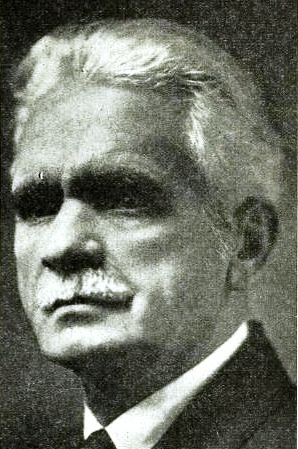
Brigham Henry Roberts was a historian, politician, and leader in the Church of Jesus Christ of Latter-day Saints. He edited the seven-volume History of the Church of Jesus Christ of Latter-day Saints and independently wrote the six-volume Comprehensive History of the Church of Jesus Christ of Latter-day Saints. Roberts also wrote Studies of the Book of Mormon—published posthumously—which discussed the validity of the Book of Mormon as an ancient record. Roberts was denied a seat as a member of United States Congress because of his practice of polygamy.

The Encyclopedia of Mormonism is a semi-official English-language encyclopedia for topics relevant to the Church of Jesus Christ of Latter-day Saints. The five-volume texts have been digitized and are available for free online via the Harold B. Lee Library's official website.

Richard Lyman Bushman is an American historian and Gouverneur Morris Professor Emeritus of History at Columbia University, having previously taught at Brigham Young University, Harvard University, Boston University, and the University of Delaware. Bushman is the author of Joseph Smith:Rough Stone Rolling, an important biography of Joseph Smith, progenitor of the Latter Day Saint movement. Bushman also was an editor for the Joseph Smith Papers Project and now serves on the national advisory board. Bushman has been called "one of the most important scholars of American religious history" of the late-20th century. In 2012, a $3-million donation to the University of Virginia established the Richard Lyman Bushman Chair of Mormon Studies in his honor.
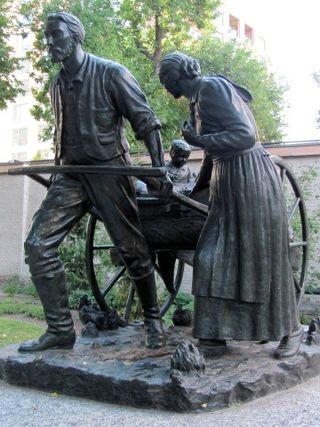
The Mormon religion is predicated on what are said to be historical events such as the First Vision of Joseph Smith and the historicity of the Book of Mormon, which describes a detailed pre-Columbian history of the Americas. Joseph Fielding Smith, the tenth president of the Church of Jesus Christ of Latter-day Saints, declared that "Mormonism, as it is called, must stand or fall on the story of Joseph Smith. He was either a prophet of God, divinely called, properly appointed and commissioned, or he was one of the biggest frauds this world has ever seen. There is no middle ground." As Jan Shipps has written, "Mormonism, unlike other modern religions, is a faith cast in the form of history," and until after World War II, Mormons did not critically examine the historical underpinnings of their faith; any "profane" investigation of the church's history was perceived "as trespassing on forbidden ground."

Jo Ann Barnett Shipps, known as Jan Shipps, is an American historian specializing in Mormon history, particularly in the latter half of the 20th century to the present. Shipps is generally regarded as the foremost non-Mormon scholar of the Latter Day Saint movement, having given particular attention to the Church of Jesus Christ of Latter-day Saints. Her first book on the subject was Mormonism: The Story of a New Religious Tradition published by the University of Illinois Press. In 2000, the University of Illinois Press published her book Sojourner in the Promised Land: Forty Years Among the Mormons, in which she interweaves her own history of Mormon-watching with 16 essays on Mormon history and culture.
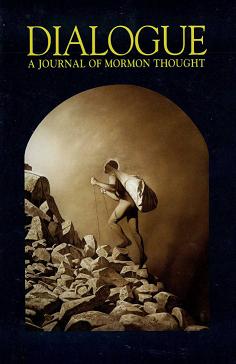
Dialogue: A Journal of Mormon Thought is an independent quarterly journal that addresses a wide range of issues on Mormonism and the Latter Day Saint Movement.

View of the Hebrews is an 1823 book written by Ethan Smith, a Congregationalist minister in Vermont, who argued that Native Americans were descended from the Ten Lost Tribes of Israel, a relatively common view during the early nineteenth century. Numerous commentators on Mormon history, from LDS Church general authority B. H. Roberts to Fawn M. Brodie, biographer of Joseph Smith, have noted similarities in the content of View of the Hebrews and the Book of Mormon, which was first published in 1830, seven years after Ethan Smith's book.
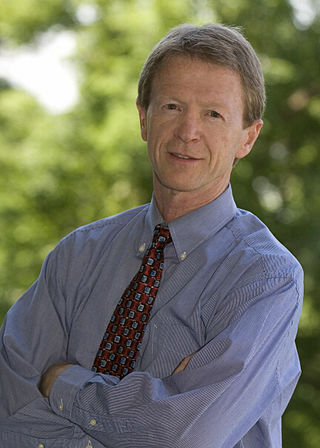
Philip Layton Barlow is a Harvard-trained scholar who specializes in American religious history, religious geography, and Mormonism. In 2019, Barlow was appointed associate director of the Neal A. Maxwell Institute for Religious Scholarship. Barlow was the first full-time professor of Mormon studies at a secular university as the inaugural Leonard J. Arrington Chair of Mormon History and Culture at Utah State University (USU), from 2007 to 2018.
New Mormon history refers to a style of reporting the history of Mormonism by both Mormon and non-Mormon scholars which departs from earlier more polemical or faith-based styles of history. Rather than presenting material selectively to either prove or disprove Mormonism, the focus of new Mormon history is to present history in a more humanistic and dispassionate way, and to situate Mormon history in a fuller historical context. Because it is a break from past historical narratives, new Mormon history tends to be revisionist. In many cases, the new Mormon history follows the perspectives and techniques of new history, including cultural history. The Mormon historian Richard Bushman described it as "a quest for identity rather than a quest for authority." New Mormon historians include a wide range of both Mormon and non-Mormon scholars, the most prominent of which include Bushman, Jan Shipps, D. Michael Quinn, Terryl Givens, Leonard J. Arrington, Richard P. Howard, Fawn Brodie, and Juanita Brooks.
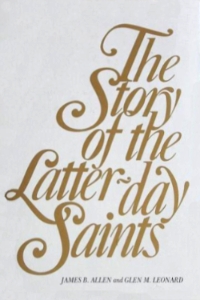
The Story of the Latter-day Saints is a single-volume history of the Church of Jesus Christ of Latter-day Saints by James B. Allen and Glen M. Leonard, first published in 1976.
Mormon studies is the interdisciplinary academic study of the beliefs, practices, history and culture of individuals and denominations belonging to the Latter Day Saint movement, a religious movement associated with the Book of Mormon, though not all churches and members of the Latter Day Saint movement identify with the terms Mormon or Mormonism. Denominations of the Latter Day Saint movement include the Church of Jesus Christ of Latter-day Saints, by far the largest, as well as the Community of Christ (CoC) and other smaller groups, include some categorized under the umbrella term Mormon fundamentalism.

Joseph Smith Jr. was an American religious leader and the founder of Mormonism and the Latter Day Saint movement. Publishing the Book of Mormon at the age of 24, Smith had attracted tens of thousands of followers by the time of his death fourteen years later. The religion he founded continues to the present day, with millions of global adherents and several churches claiming Smith as their founder, the largest being The Church of Jesus Christ of Latter-day Saints.
Patrick Q. Mason is an American historian specializing in the study of the Latter-day Saint movement. Since 2019, he has held the Leonard J. Arrington Chair of Mormon History and Culture at Utah State University.
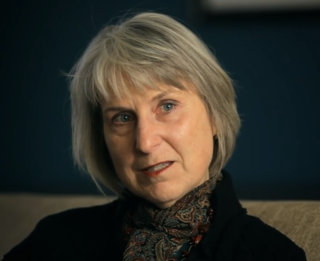
Kathleen Flake is a historian, writer, and attorney and is currently the Richard Lyman Bushman Chair of Mormon studies at the University of Virginia.

The John Whitmer Historical Association (JWHA) is an independent, nonprofit organization promoting study, research, and publishing about the history and culture of the Latter Day Saint movement. It is especially focused on the Community of Christ, other midwestern Restoration traditions, and early Mormonism. The Community of Christ's approach to its own history was influenced, in part, by historical problems raised and explored through JWHA publications and conferences, and those of its sister organization, the Mormon History Association. JWHA membership numbers around 400 and is open to all, fostering cooperation with LDS and non-Mormon scholars.
This is a bibliography of works on the Latter Day Saint movement.
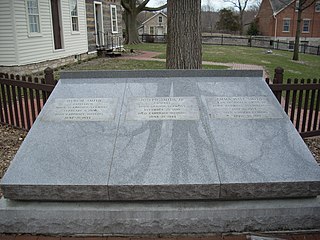
The legacy of Joseph Smith includes the immediate aftermath of Smith's killing, among various competing denominations, the status of his family and the church he founded, and a scholarly assessment of his life and religion. Although Smith was killed in 1844, he attracted thousands of devoted followers before his death, and millions in the century that followed. Among Mormons, he is generally regarded as a prophet on par with Moses and Elijah. In a 2015 compilation of the 100 Most Significant Americans of All Time, Smithsonian magazine ranked Smith first in the category of religious figures.
References
- 1 2 Dallin H. Oaks, "Reading Church History", Ninth Annual Church Educational System religious Educators' Symposium, August 16, 1985, Brigham Young University.[ full citation needed ]
- ↑ Leonard J. Arrington (1972). "Joseph Fielding Smith: Faithful Historian". Dialogue: A Journal of Mormon Thought. 7 (1): 23–26.
- ↑ American Women Historians 1700s–1990s: A Biographical Dictionary, Jennifer Scanlon, Shaaron Cosner. Westport, Connecticut: Greenwood Publishing Group, 1996 ISBN 978-0-313-29664-2
- ↑ Manwaring, Kurt. "10 questions with Susan Easton Black", BYU Studies , 26 February 2019. Retrieved on 4 April 2021.
- ↑ "U.Va. Names Kathleen Flake as First Bushman Chair of Mormon Studies". 9 September 2013.
- ↑ Bunning, Rachel. "Graduating with her master’s degree in history, student plunges into the world of research", ASU News , 7 December 2020. Retrieved on 9 March 2021.
- ↑ Walch, Tad (2016-02-16). "Women hired by LDS Church History Department making huge strides in Mormon women's history". Deseret News. Retrieved 2019-07-29.
- ↑ Pimentel, Annette. "All the women should be there", Mormon Women Project, Utah, 25 April 2017. Retrieved on 7 August 2019.
- ↑ Marshall, John (July 27, 2003). "Two powerful experiences changed the focus of Krakauer's book". Seattle Post-Intelligencer.
- ↑ McBaine, Neylan (2009-10-30). "Faith of our Foremothers". Mormon Women Project. Retrieved 2019-07-29.
- ↑ Shipps, Jan (2000). Sojourner in the Promised Land: Forty Years Among the Mormons. Urbana: University of Illinois Press. pp. 13–14. ISBN 978-0-252-02590-7 . Retrieved 2021-04-04.